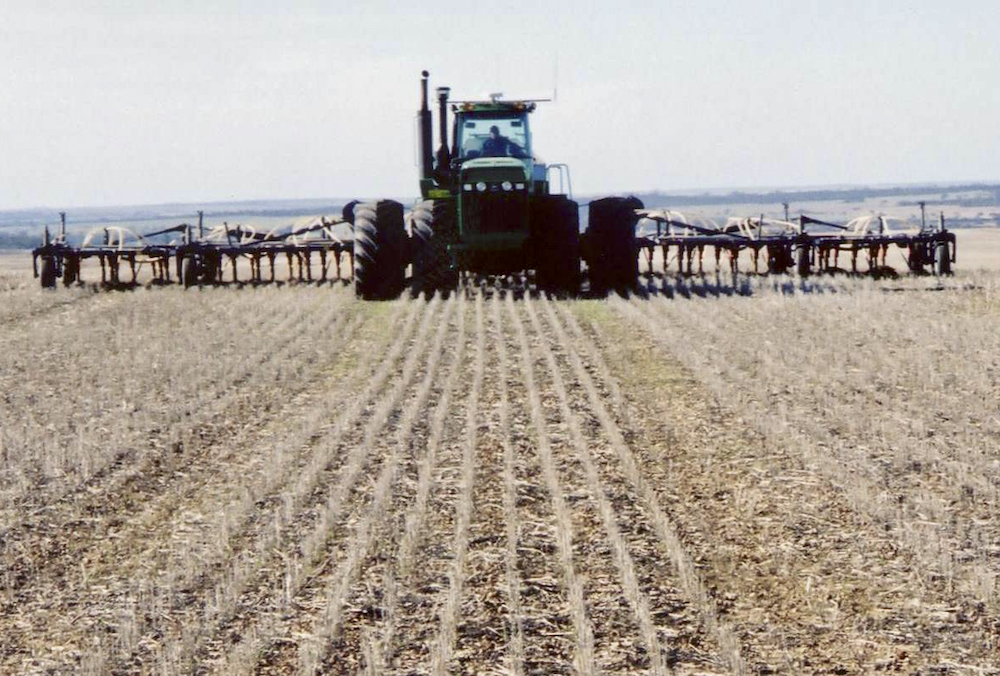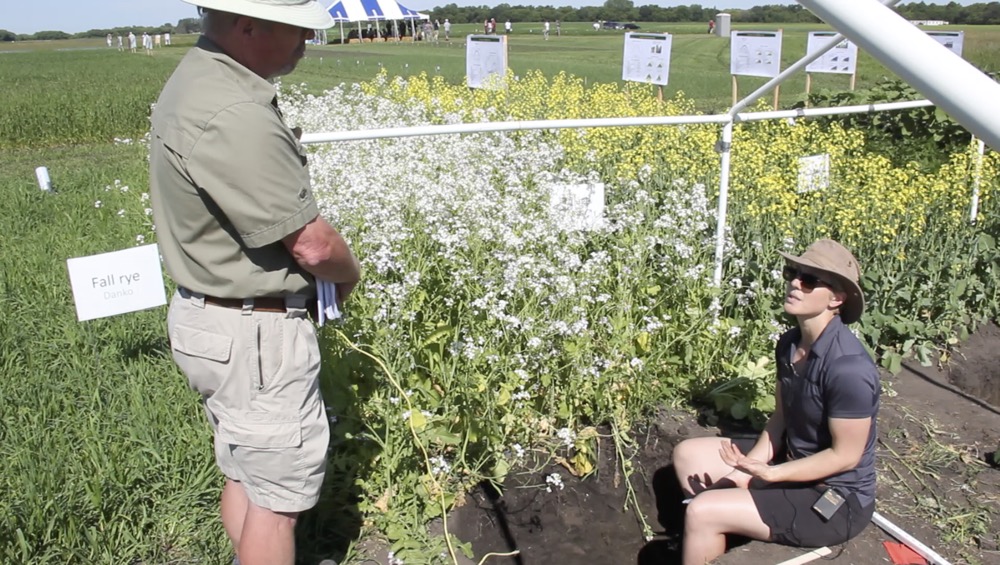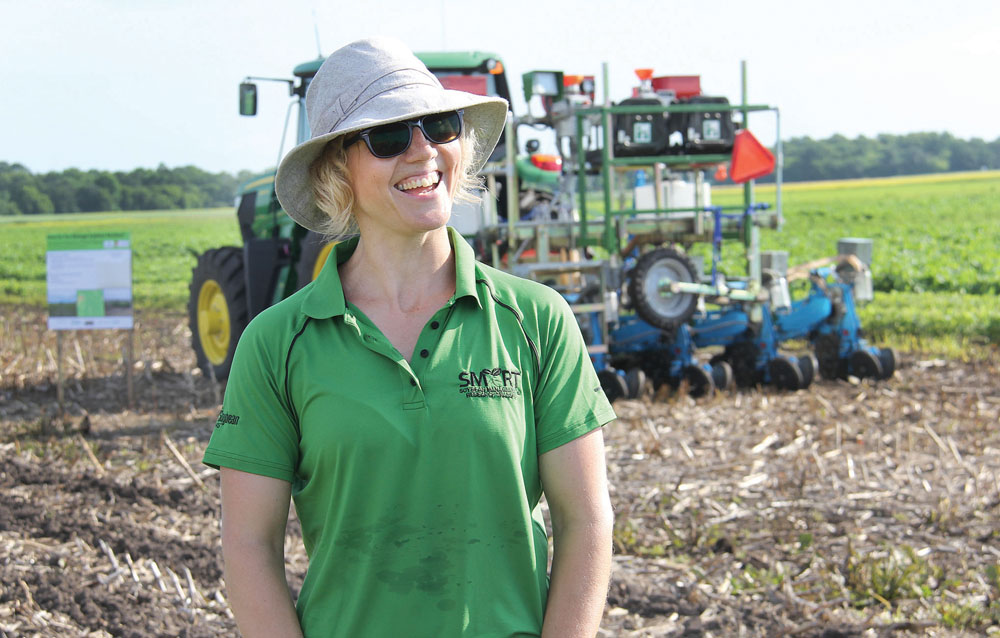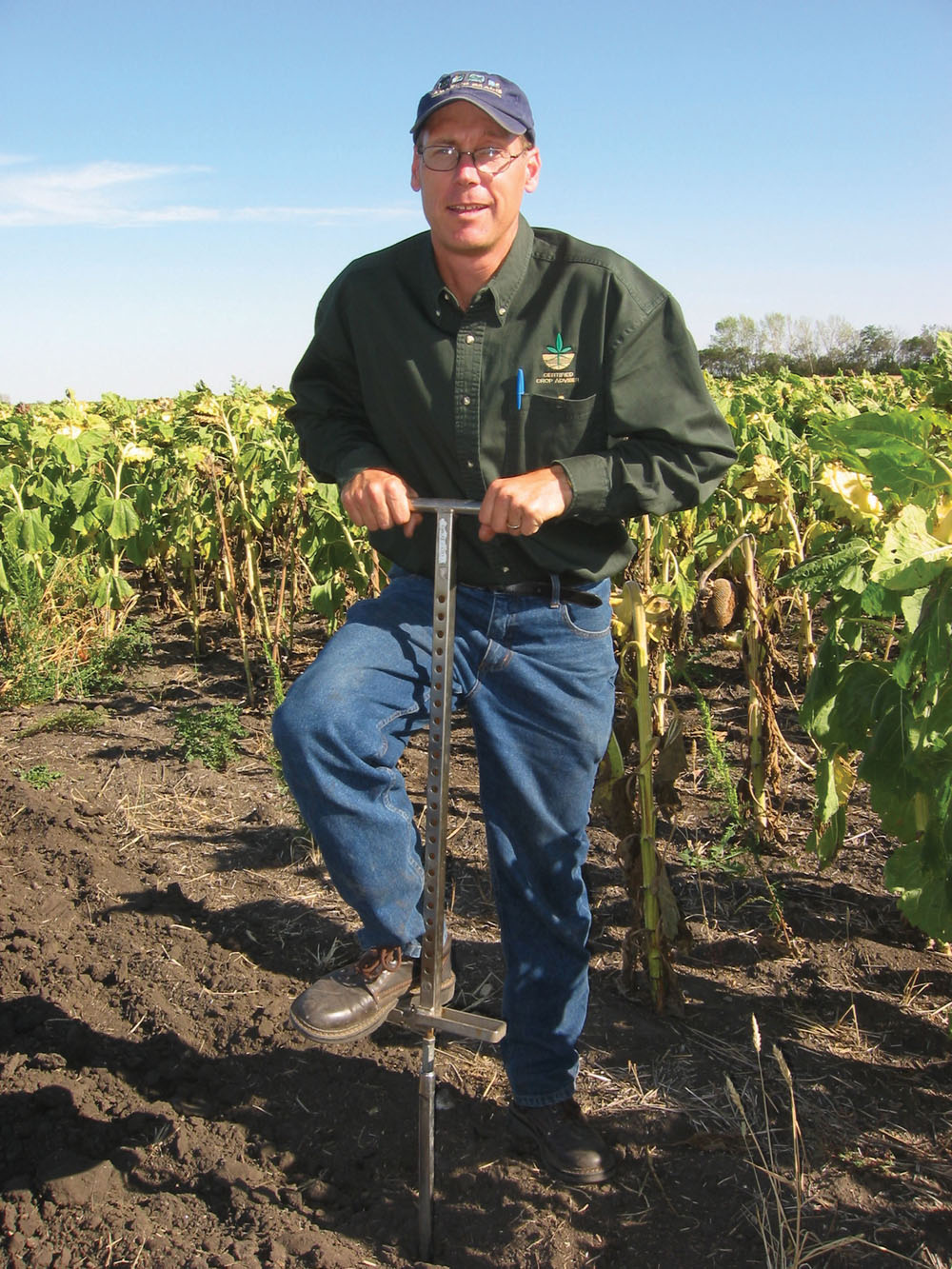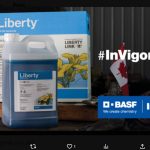
Adam Gurr heard of controlled traffic farming (CTF) about 15 years ago and dismissed it at first.
He felt living in a freeze/thaw climate like ours would break up any soil compaction in his fields so it wasn’t necessary here.
Still, when he looked closely at crop growth on the previous year’s combine tracks the Brandon-area farmer and on-farm researcher started to wonder if the freeze/thaw cycles were really doing the job.
“We started experimenting with seasonal CTF in 2011 and that involved seeding and sprayer traffic,” he told the Northern Soil Compaction Conference earlier this winter. “We had a 120-foot sprayer and a 60-foot drill so it was simple to do. We committed to the system in 2012 and we’ve been doing it ever since.”
Read Also

Gene editing digs deeper space in Canadian plant breeding
More Canadian research into crop variety development is incorporating gene editing, and one researcher notes that Canada’s regulatory approach to gene editing will help drive innovation
It’s a practical solution to soil compaction, an inescapable problem with heavy farm machinery working on the soil. The weight of the machine compresses the soil structure and decreases the pore spaces between soil particles. Since those pore spaces contain the water, air and biology, it affects both your soil health and your yields. CTF helps to limit the effects of compaction. CTF Europe calls controlled traffic farming a “whole-farm approach to separating crops from wheels.”
“Essentially you’re using compaction in those permanent wheel tracks to your advantage,” Gurr said. “About 85 per cent of our field area never has traffic so that allows the soil to get into a state that is conducive to crop growth and it’s easier to pull equipment through. It’s definitely of value there.”
The first thing any farmer has to consider before adopting CTF is the wheel gauge. If you’re going to establish permanent tracks on your land, they have to fit the wheelbase of every machine. It starts with your header width.
“Our CTF system is a 40-foot system so we have a 40-foot harvester header, we have an 80-foot drill, a 120-foot sprayer, all the other equipment is either 40 feet or 80 feet,” Gurr said. We’re fortunate enough that when we got into CTF we didn’t have a large upfront investment because we were running Challenger tractors and Lexion combines and you can’t really modify a combine.”
Many of the equipment manufacturers are responding to CTF growers in other parts of the world so we’re seeing more machines built to these size standards here. Gurr mentioned that Honeybee was the only manufacturer that he knew of that actually built a 40-foot header although it was actually 40-1/2 feet. Many were 12 metres which isn’t actually 40 feet.
“You wouldn’t go out to the field with a tape measure but you do that when you’re in CTF,” he said. “But these companies, probably because of demand from CTF growers in other parts of the world, seemed to address that. I know that’s what drove Claas to do it. Instead of making 12-metre headers it’s making 12.3 metres now and MacDon has gone that route too and that’s good.”
As with the no-till farming that came before it, CTF is demanding a retooling of farm equipment. The costs are obvious but what are the benefits?
Gurr started by talking about the potential yield increases due to better growing conditions within a healthier soil. Data presented by CTF Europe suggests this is the case with almost all crops. Closer to home, he told the story of Dean Glenney, an agricultural engineer in Ontario who returned to the farm and began serious work on CTF. Although it took a couple of years, Glenney found that it did bump up his yields, in some cases quite dramatically.
“His soybeans looked good but they weren’t much more than the county average,” Gurr said. “But what got a lot of attention for Dean were the corn yield contests he started winning because he was getting corn yields that were close to double the county average. People were wondering, what the heck is he doing?”
Then there’s fuel consumption. Although this may not be a prime reason a farmer might take up CTF, Gurr found it was an unexpected benefit because he got better machine performance. The tires worked better on a solid surface and the seeder was easier to pull in lighter, uncompacted soil.
“You’re always driving on a roadway,” Gurr said. You have reduced draft requirements because of that more ideal soil condition and when we’re pulling our drill through that soil and it’s less dense and it’s better drained. That soil gets into more favourable seeding and that affects draft requirements and subsequent fuel use.”
Water infiltration rates was another big one for Gurr and he actually conducted serious studies on how water behaved on Newdale soils on his land and some surrounding plots. Since the soil wasn’t compacted as badly as a random trafficked field, there were more pore spaces.
“Infiltration rates, that was a big one. I did a study from the years 2013 to 2016 and we had to do a lot of measurements in the fall of 2016. Anyway, this was obvious for us. Anybody who’s ever done infiltration on trafficked soil you see these dramatic differences.”
Traffic on a regular basis quickly destroys what benefits the natural processes have done since your previous run over the ground. The soil improvements with CTF become permanent when the soil in the growing portion of the field doesn’t have the regular traffic and there are benefits to this in both wet and dry seasons.
“The more water we can keep on the landscape and in the profile, the more it’s going to benefit the crop in those years,” he said. I feel we can do a better job of seeding in a wet season not only because we have an easier time pulling our equipment through but the fact that it’s a better soil condition to work with. And then of course, from an environmental perspective, keeping water on your landscape means reducing pollutants, sediments, fertilizers and pesticides that would otherwise get into any water moving off the field.
“My thoughts 10 years in,” he concluded. “CTF works without a question. There’s benefits to this system that are very real and measurable.”

